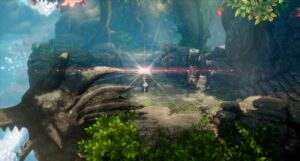Despite never getting an official release outside of Japan, the original Clock Tower has been a cornerstone influence within the survival horror genre. Clock Tower accompanies 1992’s Alone in the Dark as one of the best survival horror games of its time. As the 16-bit visuals suggest, Clock Tower was first on the Super Famicom in 1995. It saw an enhanced version for the PS1 called Clock Tower: The First Fear, which added some additional scenarios and features. Now, in 2024, we get Clock Tower Rewind, which marks the first time the game has released outside Japan. Rewind stands as the definitive version of Clock Tower, coming packages with a port of the 1995 original game and an enhanced version of First Fear, plus other bonuses and additions courtesy of WayForward.
"Clock Tower: Rewind comes with a bunch of fun bonuses like old strategy guides and dev interviews"
The 1995 port includes new translations in English, French, Italian, German, Spanish, Japanese, Korean, Traditional Chinese, and Simplified Chinese, but other than that, it’s the same16-bit game from 1995. Rewind includes all the content from The First Fear along with the ability to rewind gameplay, create save states, some additional Scissorman hiding places (more on that later), and some quality of life enhancements like running up stairs. Some cool extra goodies also come packed with Rewind, ranging from motion comics, dev interviews, a soundtrack player, an animated intro, vocal songs, and a bit more. I particularly appreciate the inclusion of the original instruction manual and strategy guide, even with its Japanese-only text. Although Clock Tower Rewind clearly has a lot of love put into its quality of life and content, the game itself requires a lot of patience and appreciation for archaic point and click design. Let’s go over what makes Clock Tower tick and what keeps it stuck in the past.
Let’s start with an icebreaker: Clock Tower is a quintessential point and click hidden object adventure game and isn’t ashamed of it. If you don’t have the patience for old-school adventure games, Clock Tower’s horror goodness won’t compensate for that archaic style of gameplay.
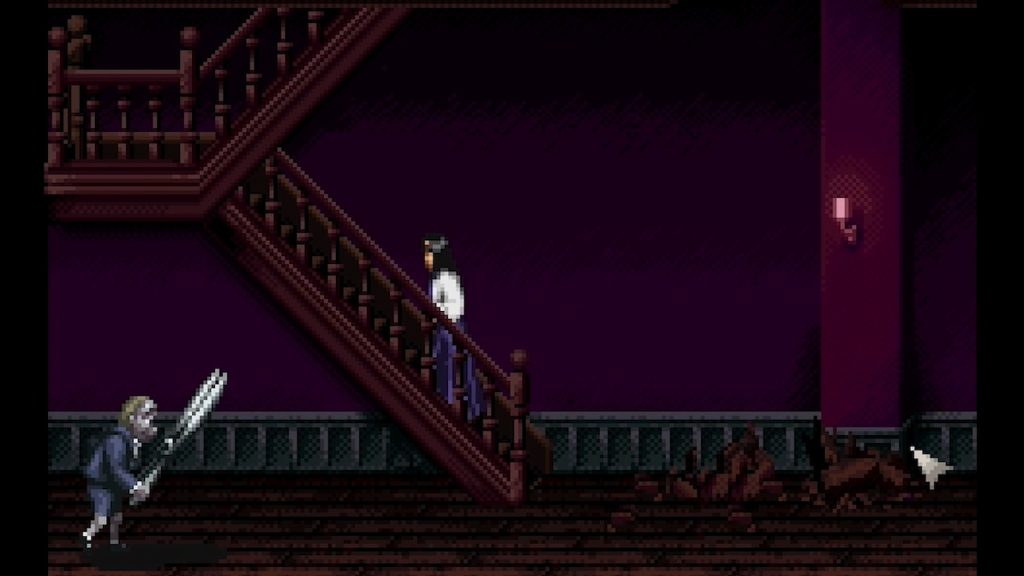
"Running from the dreaded Scissorman can be a chore thanks to slow walking animations, but at least this version adds running to stairways."
Your primary objective in Clock Tower is avoiding the deadly Scissorman by hiding and ultimately looking for a way to escape the deadly Barrows family manor. Navigation is accomplished by holding left/right run buttons and clicking on interactable objects and doors. The Rewind version allows Jennifer to run up and down stairs instead of merely walk, which speeds up gameplay flow a bit from the original. That said, you still have to wait for laboriously slow walking animations to finish whenever you interact with something. This is compounded by Jennifer walking to a location and back to her previous spot again with no urgency whatsoever, making you wait twice as long for the lengthy animation to finish. Double clicking makes her run to the interactable, but only for some of them. Thankfully, the animations themselves are from the glory days of the Super Famicom and are a delight to look at, but that doesn’t take away from the monotony of all the waiting.
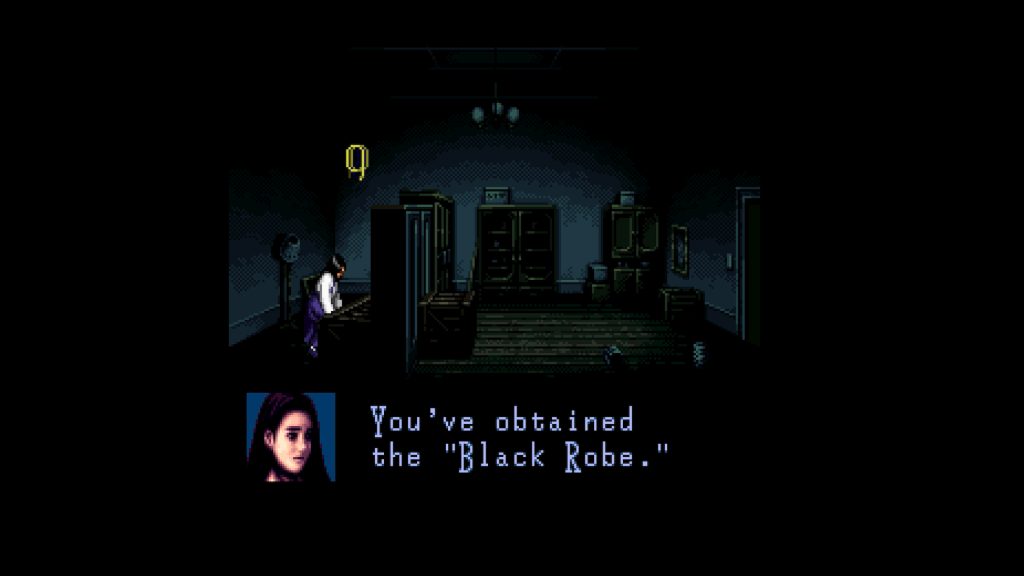
"Progression typically involves obtuse adventure game logic like using items on random parts of the environment in a specific order"
When you’re not waiting around for Jennifer to get to her destination, you are pixel-hunting environments for usable objects and clues. In typical adventure game fashion, the way forward (pun intended) often requires a tiny object and its corresponding interactable within the environment. You have no way to figure certain things out except the trial and error involved with using objects on random environments. The logic behind these applications is often very obscure, though Clock Tower could hardly be considered the worst offender of this kind of adventure game logic. Guidance is just something Clock Tower doesn’t do well, even in the Rewind version. Not that I want such an atmospherically rich game to spell everything out with objective markers and yellow paint, but subtle hints now and then could’ve helped massage the obtuseness of the original game.
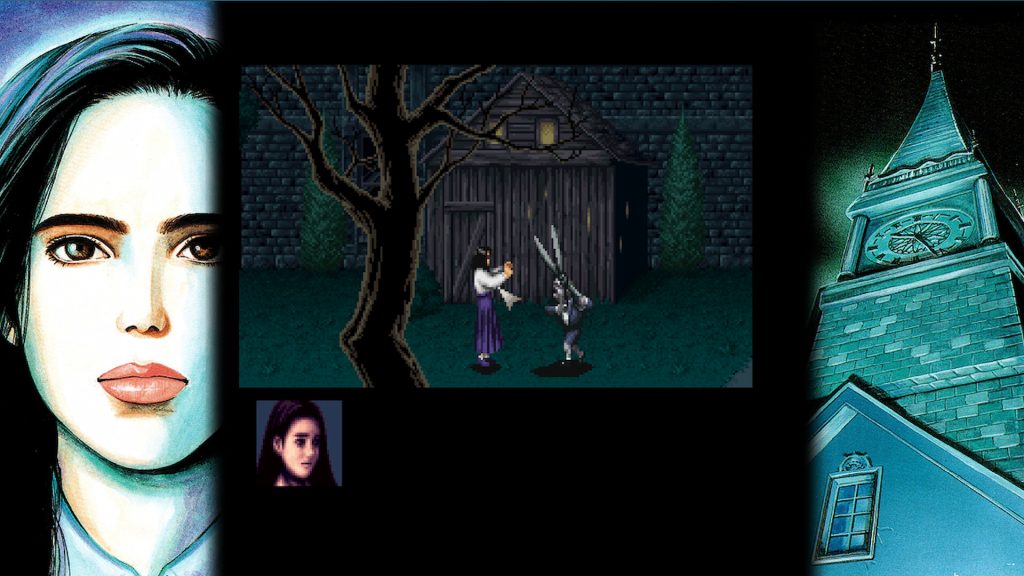
"You can temporarily stun Scissorman by pressing the ‘panic’ button, but he’ll continue to chase you until you find a proper hiding spot"
Still, it wasn’t the obscure adventure game logic that finally made me cave in and use a walkthrough; no, it was the constant running away from Scissorman. Scissorman is your only consistent threat throughout the game, popping up in random areas like bathtubs and dressers. To the game’s credit, these chases can be exhilarating and terrifying. No punches are pulled with some of the deaths, and the sound effects and accompanying music stir up anxiety almost too well. But after your first couple deaths to Scissorman, the charm starts to wear off as you look for hiding places and ways to stop him. Such a large portion of my playtime was spent just running away from this threat, and it was rarely fun. For one, you are locked out of interacting with objects in rooms while Scissorman is in pursuit, mandating backtracking to retrieve such items. Once you figure out successful hiding places and ways to throw off the pursuer, the chase whittles down to formulaic backtracking to the hiding spot, something that takes too long due to Jennifer’s slow run speed and door-opening animations.
The quality-of-life features don’t quite do enough to get over the clunky and glacially slow pacing of the game either. For example, the rewind feature only goes back 10 seconds, which rarely gives you enough time to avoid a Scissorman attack or prevent a character death. Also, the more aggressive Scissorman AI present in this Rewind version only compounds the irritating issues bogging down the chases, making you backtrack into rooms for safety more frequently and padding the game further. Don’t get me wrong, the concept of these Scissorman chases is rich with potential, something more modern horror games have since capitalized on. But when done with the point and click control scheme and slow pacing, these chase sequences feel redundant and irritating.
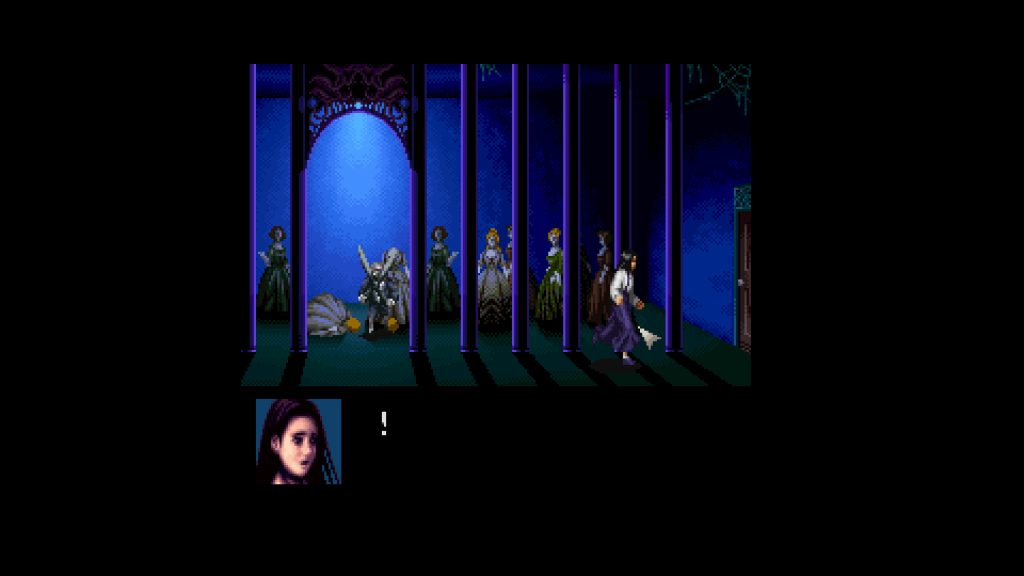
"Environments have brilliant lighting and detailed spritework, emphasizing the dark atmosphere of Barrows Manor perfectly"
By contrast, I have nothing but compliments to give to Clock Tower’s atmosphere and story. The game starts off more or less how you’d expect; a group of orphans visiting their new home for the first time when the smart one of the group, Jennifer, senses something off. There’s a surprising amount of lore and history behind the spooky Barrows manor and its demented owners.
Better yet, the story is unraveled through subtle gameplay discoveries as you explore the mansion, with several details being entirely missable depending on the decisions you make and ending you get. While some of the nine endings are similar to each other, others take a drastically different turn resulting in Jennifer’s demise or even worse. The backstory and reveal surrounding the Barrows family is really well done and worth experiencing, with brilliant ‘show, don’t tell’ exposition and striking visual storytelling utilizing all of the resources a 16-bit console could dish out. There’s a phenomenal sequence in the cave section that rivals some of the best visual moments in the genre.
Complimenting the visual storytelling is the exquisite spritework. There’s some good attention to detail with the room layouts and animations. Putting a bow on everything is the atmospheric soundtrack, clearly influenced by John Carpenter with its shrill strings and dissonant stabs. The minimalistic way the music and sound effects accompany the journey through the manor has inspired many future horror classics like Silent Hill and Resident Evil, and it’s easy to see why with this remaster.

"Shock scare moments occur when exploring, some of which are wonderfully animated"
Clock Tower is a game stuck in the past despite the handful of new conveniences. There’s only so much that can done to improve a point and click game without altering the mechanics entirely. When played using a walkthrough, Clock Tower supplies an atmospherically rich experience with some irritating, but doable gameplay. For hardcore horror fans or old-school point and click adventure game players, Clock Tower Rewind comes as a strongly recommended title. Just know what you’re getting into beforehand because the archaic puzzle solutions and lack of direction serve as a roadblock to enjoying this classic horror experience.
This game was reviewed on PC.
The exposition and way the story is revealed is excellent, Using the environment in intriguing to uncover the story; Haunting atmosphere thanks to amazing spritework and a Carpenter-esque score; Rewind adds several cool features like motion comics, dev interviews, save states, and more.
Movement and animations are slow and feel laborious at times; Scissorman chases get repetitive and irritating due to backtracking; Archaic solutions in order to progress with no hints or guidance.











